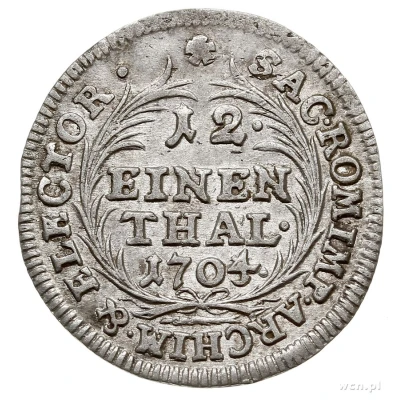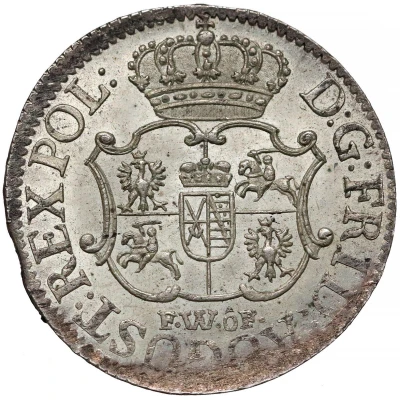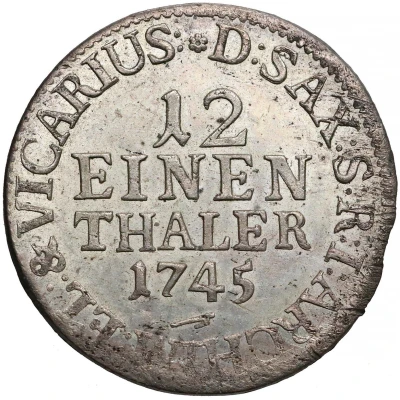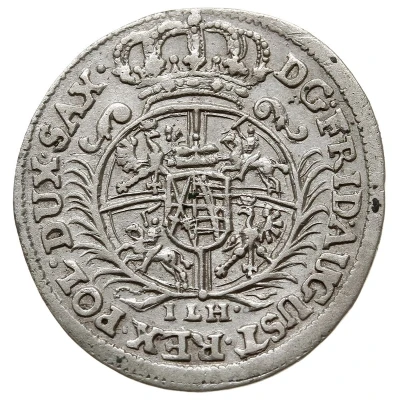
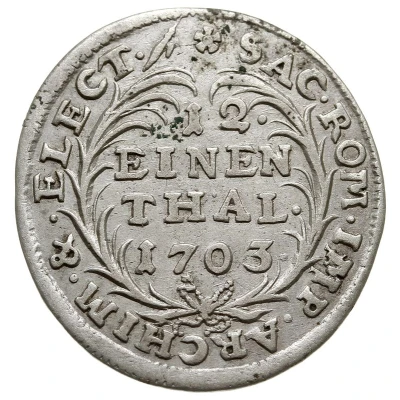

© Warszawskie Centrum Numizmatyczne s.j.
1⁄12 Talara / Dwugrosz - August II Mocny Drezno
| Silver | - | - |
| Issuer | Polish–Lithuanian Commonwealth |
|---|---|
| King | Augustus II the Strong (1697-1733) |
| Type | Standard circulation coin |
| Years | 1701-1733 |
| Value | 1⁄12 Thaler (1⁄12 Talara) (⅔) |
| Currency | First Zloty (1573-1795) |
| Composition | Silver |
| Shape | Round |
| Technique | Milled |
| Demonetized | Yes |
| Updated | 2024-10-07 |
| Numista | N#97048 |
|---|---|
| Rarity index | 100% |
Reverse
Script: Latin
Comment
August II Mocny (the Strong) (1670-1733) was Dux and Princ-Elector of Saxony (1697-1733), under the name Friedrich August I he was elected as King of Poland and Grand Duke of Lithiania (1697-1706, 1709-1733) (Personal Unia). August had to pass temporary the Polish throne to Stanislav when Swedish Impire occupied Warsaw and won the Battle of Fraustad. Later, in 1709 Russian Imperor Peter won the Battle of Poltava against Swedes and then August was re-assigned to Polish throne again under protection of the Russian Impere. During Saxonian-Polish-Lithianian Unia many Polish and Saxonian coins were minted of the same type.Kopicki 10715
Kopicki 10717
Kopicki 10719
Pictures: WCN
Kopicki 10721
Kopicki 10723
Kopicki 10725
Kopicki 10727
Kopicki 10737
Kopicki 10739
Kopicki 10741
Kopicki 10743
Kopicki 10745
Kopicki 10747
Kopicki 10748
Kopicki 10750
Kopicki 10752
Kopicki 10753
Kopicki 10754
Kopicki 10755
Kopicki 10756
Kopicki 10757
Kopicki 10758
Kopicki 10759
Kopicki 10760
Kopicki 10761
Kopicki 10762
Kopicki 10763
Kopicki 10764
Kopicki 10765
Kopicki 10766
Kopicki 10767
Interesting fact
The August II Mocny (Drezno) 1701-1733 coin from the Polish-Lithuanian Commonwealth was made of silver, and it's interesting to note that the coin's design features a unique blend of Polish and Lithuanian elements. The obverse side of the coin depicts the coat of arms of Poland, while the reverse side features the coat of arms of Lithuania. This blending of symbols represents the unity and collaboration between the two nations during that time period.

